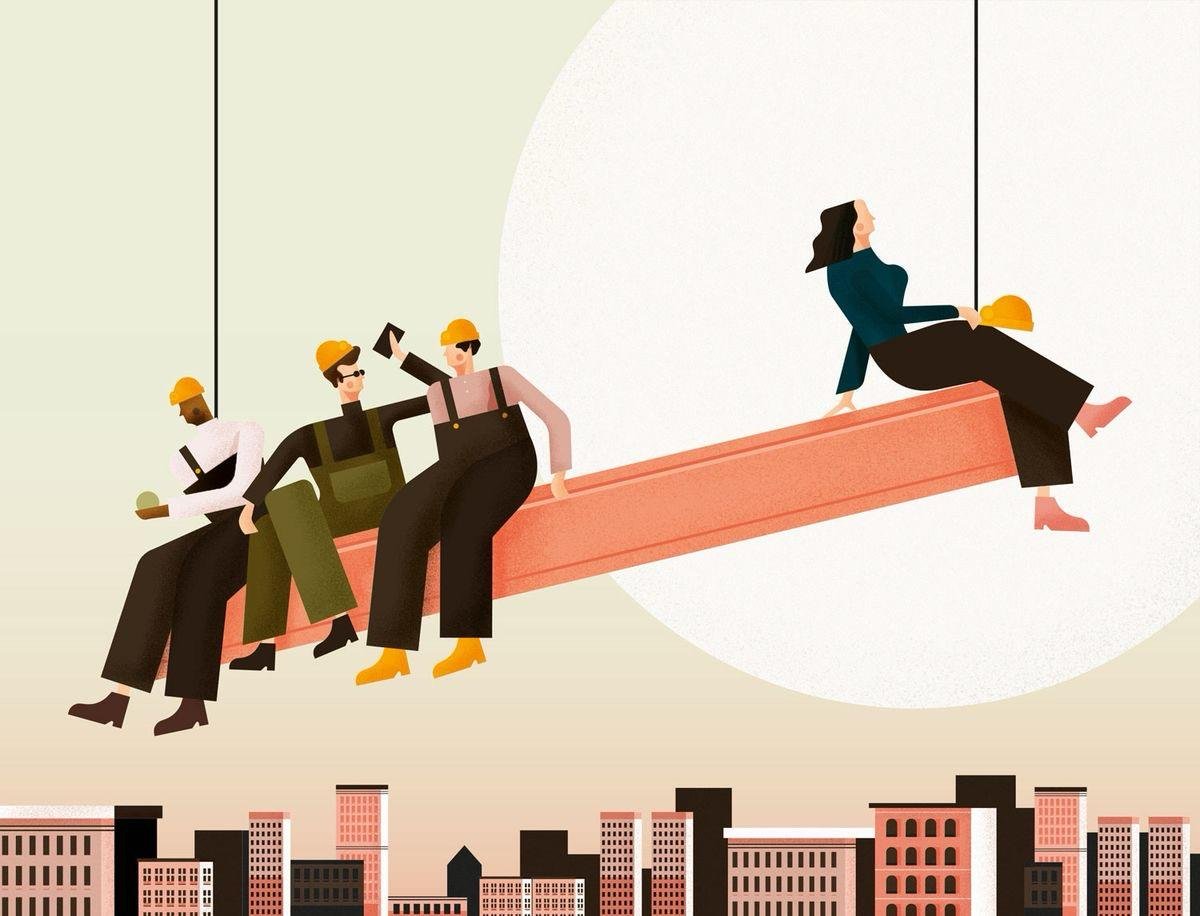Women Leading Sustainability in the Built Environment: Shaping a Greener Future
Women are taking center stage, driving sustainability initiatives, and reshaping the landscape towards a more environmentally conscious future inside the built environment sector. From architects and engineers to urban planners and sustainability experts, women are making significant strides in integrating green practices, innovative technologies, and community engagement into the fabric of our cities and structures.
Architecture, once a male-dominated field, is now witnessing a surge of talented women architects pioneering sustainable design practices. Leaders like Jeanne Gang are reimagining urban spaces with a focus on energy efficiency, green building materials, and biophilic design principles, creating structures that minimize environmental impact and enhance human well-being.
In engineering, women are leading the charge in developing sustainable infrastructure solutions, from renewable energy projects to smart transportation systems. Their expertise in areas like structural engineering, renewable energy, and water management is driving innovation, resilience, and efficiency in the built environment, while also addressing pressing environmental challenges such as climate change and resource scarcity.
Urban planning and sustainable development also benefit from women leaders' insights and perspectives. With a focus on community engagement, social equity, and environmental justice, women planners are spearheading initiatives to create livable, inclusive, and resilient cities. They advocate for green spaces, walkable neighborhoods, and public transit, fostering sustainable urban environments that prioritize people and the planet.
Moreover, women sustainability experts play a crucial role in guiding organizations, governments, and businesses toward more sustainable practices in the built environment. Through strategic planning, policy advocacy, and stakeholder engagement, they drive change at both the local and global levels, promoting green building standards, carbon-neutral initiatives, and circular economy principles.
In the corporate sector, women leaders are championing sustainability as a strategic imperative, embedding environmental considerations into business operations and decision-making processes. They recognize the business case for sustainability, driving innovation, reducing operational costs, and enhancing brand reputation while also making a positive impact on the environment and society.
Furthermore, women entrepreneurs are leveraging their creativity and entrepreneurial spirit to launch startups and ventures focused on sustainability in the built environment. From green building materials to energy-efficient technologies, these innovators are driving market disruption, creating new opportunities, and accelerating the transition to a low-carbon, sustainable future.
As we celebrate International Women's Day and beyond, it is crucial to recognize and amplify the contributions of women in shaping a greener, more sustainable built environment. By harnessing their expertise, leadership, and vision, we can create cities and structures that stand the test of time and prioritize the well-being of people and the planet for generations to come.
Notable Women in Sustainability in the Built Environment Today:
Amanda Sturgeon - As the CEO of the International Living Future Institute, Amanda Sturgeon is a force for change in the world of sustainable architecture. Her advocacy for regenerative design has led to the development of the Living Building Challenge, a pioneering certification program that pushes the boundaries of green building practices. Under her leadership, the Living Future Institute continues to drive innovation and inspire a new generation of architects to design with a focus on sustainability and resilience.
Kate Orff - Kate Orff's work as a landscape architect goes beyond aesthetics; it's about redefining our relationship with the environment. Her innovative approaches to urban ecology and resilience are evident in projects like the Living Breakwaters in New York City, which combine natural elements with engineering solutions to protect coastal communities from the impacts of climate change. Through her work, Orff demonstrates the power of design to address complex environmental challenges and create spaces that are not only beautiful but also functional and sustainable.
Ellen Dunham-Jones - Ellen Dunham-Jones is leading the way in transforming suburban landscapes into vibrant, sustainable communities. Her expertise in retrofitting suburbia for sustainability and resilience is evident in projects like the redevelopment of dead malls into mixed-use urban centers and the revitalization of suburban downtowns. Through her book "Retrofitting Suburbia" and her practical solutions, Dunham-Jones is reshaping the way we think about suburban development, making it more environmentally friendly, socially inclusive, and economically viable.
Nancy Sutley - As the Chief Sustainability Officer at the Los Angeles Department of Water and Power, Nancy Sutley is at the forefront of efforts to integrate sustainability into the city's infrastructure, energy, and water systems. Her leadership is driving initiatives to reduce carbon emissions, increase renewable energy sources, and improve water conservation and efficiency. Sutley's work is crucial in ensuring that Los Angeles remains a leader in sustainability and resilience in the face of climate change and other environmental challenges.
Marina Tabassum - Marina Tabassum's architectural designs are not only aesthetically pleasing but also environmentally conscious and contextually responsive. Projects like the Bait ur Rouf Mosque in Bangladesh, which won the Aga Khan Award for Architecture, showcase her commitment to sustainable design principles. By incorporating local materials, traditional techniques, and passive design strategies, Tabassum creates buildings that are not only sustainable but also culturally relevant and socially inclusive.
These remarkable women are just a few examples out of the several who are contributing towards a green tomorrow. Their dedication, innovation, and leadership serve as beacons of inspiration, driving positive change and shaping a more sustainable future for us all.
As women continue to lead the charge in sustainability within the built environment, their contributions are reshaping our cities, structures, and communities for a greener, more resilient future. From pioneering sustainable design practices to advocating for policy change and driving innovation, women are at the forefront of efforts to address pressing environmental challenges and create a more sustainable world for all.
On this International Women's Day and beyond, let us celebrate and amplify the voices of these remarkable women who are leading the way toward a more sustainable built environment. By recognizing their expertise, leadership, and vision, and by fostering inclusive and equitable opportunities for all, we can harness the full potential of women in sustainability and work together to build a future where our cities thrive, our buildings inspire, and our planet flourishes for generations to come.
Sources:
- International Living Future Institute. (n.d.). About Amanda Sturgeon. https://living-future.org/people/amanda-sturgeon/
- International Living Future Institute. (n.d.). Living Building Challenge. https://living-future.org/lbc/
- SCAPE. (n.d.). Living Breakwaters. https://www.scapestudio.com/projects/living-breakwaters
- Georgia Tech. (n.d.). Ellen Dunham-Jones. https://www.arch.gatech.edu/people/ellen-dunham-jones
- Aga Khan Award for Architecture. (n.d.). Bait Ur Rouf Mosque https://www.akdn.org/our-agencies/aga-khan-trust-culture/architecture/bait-ur-rouf-mosque

